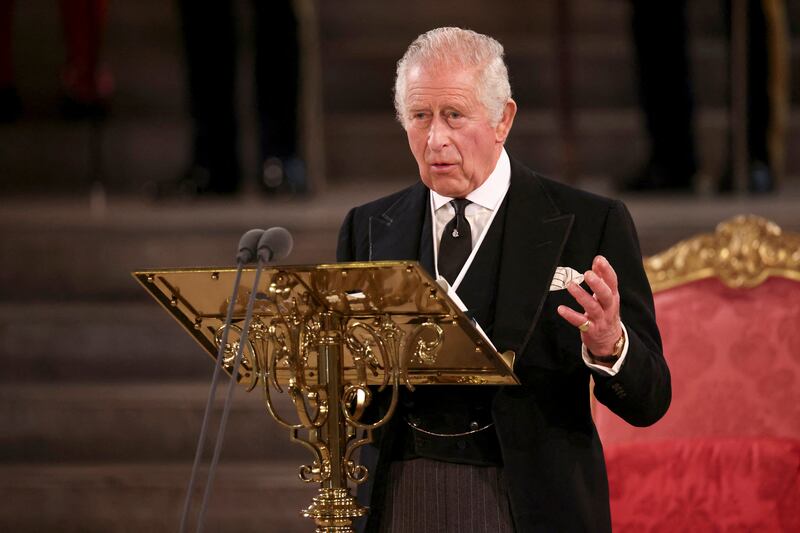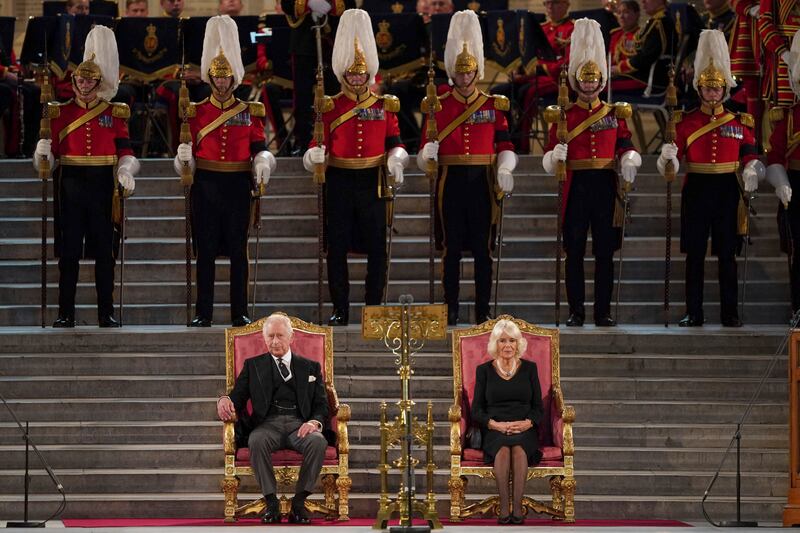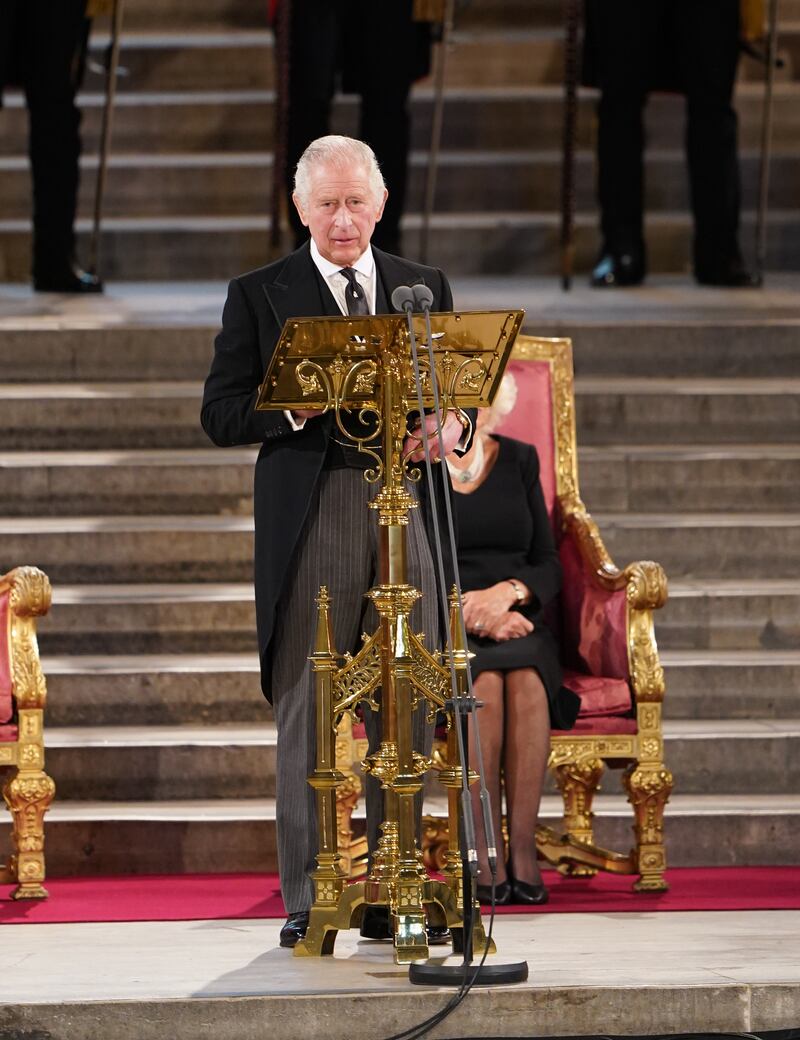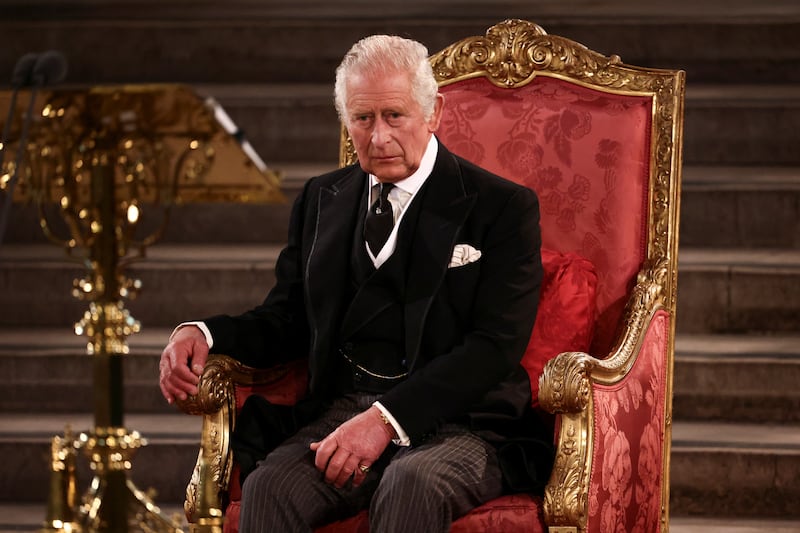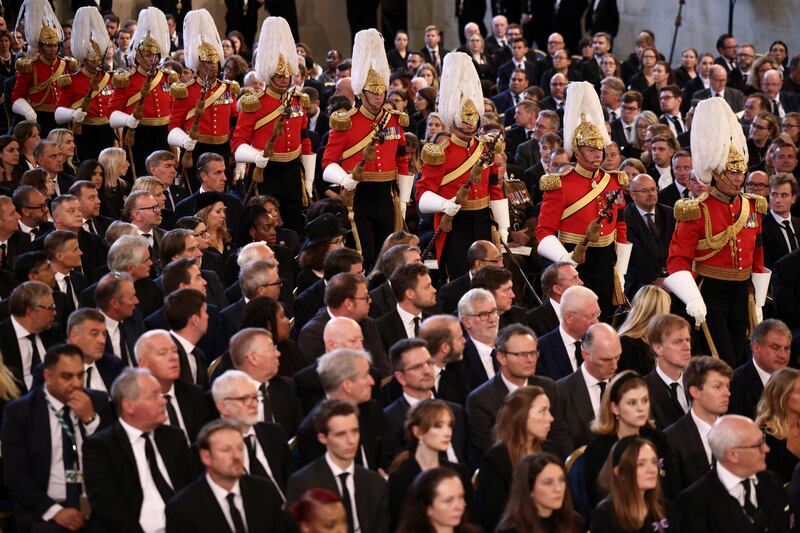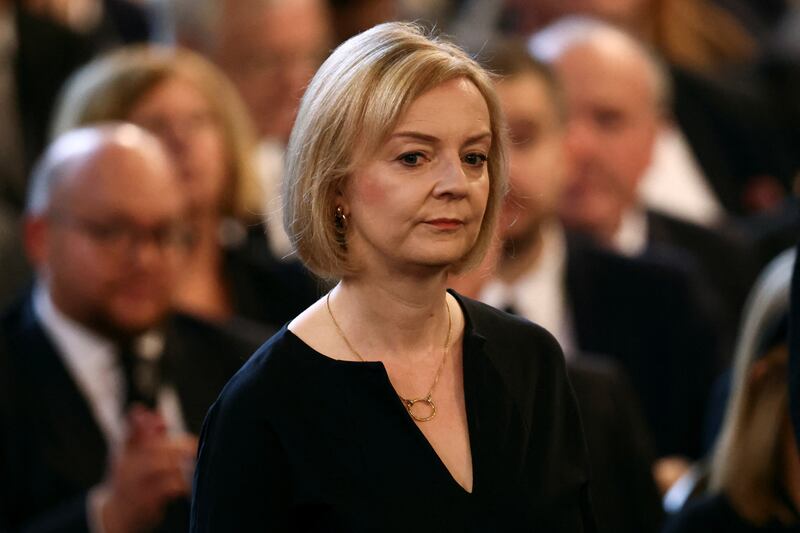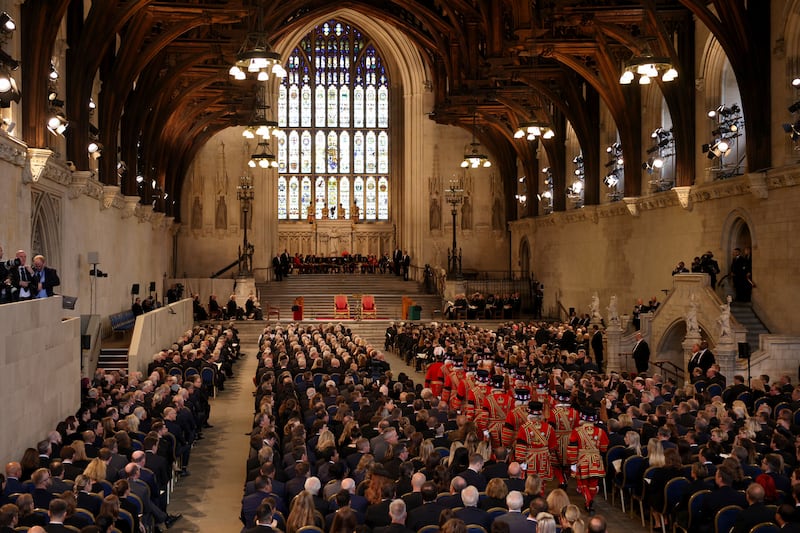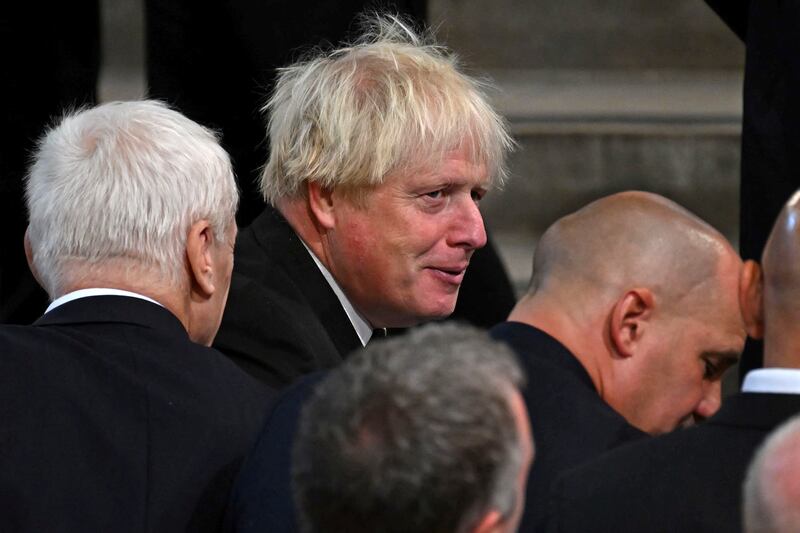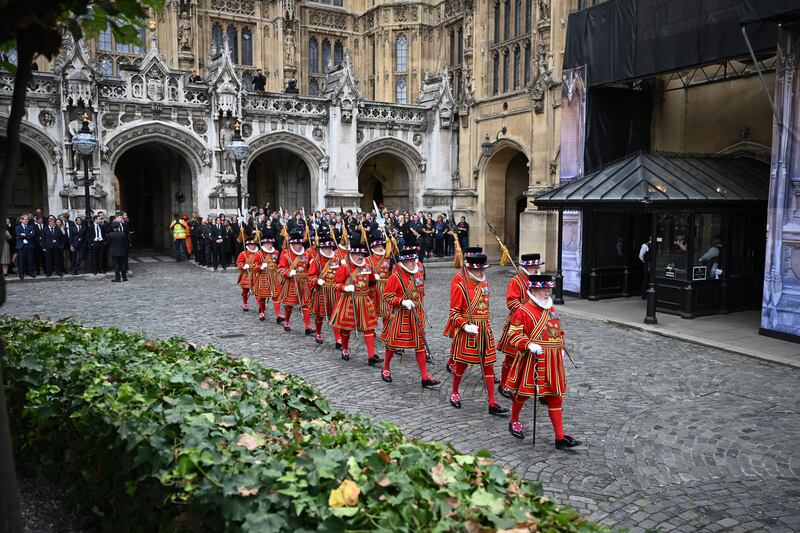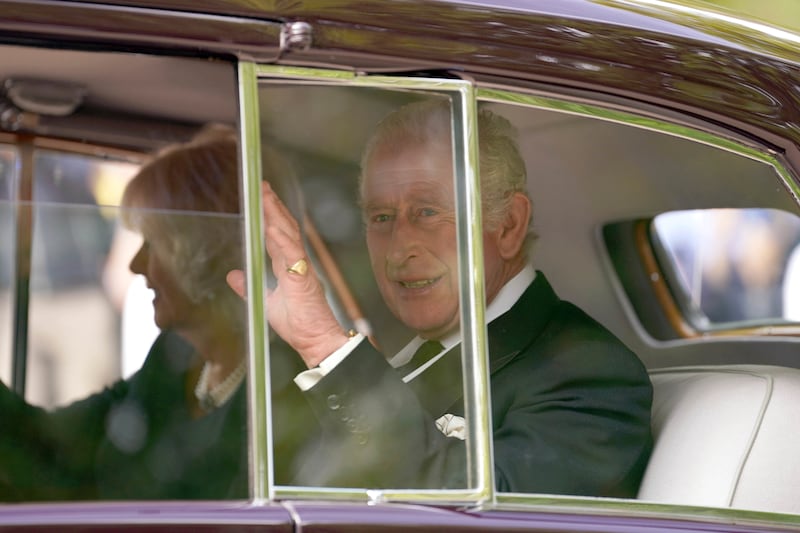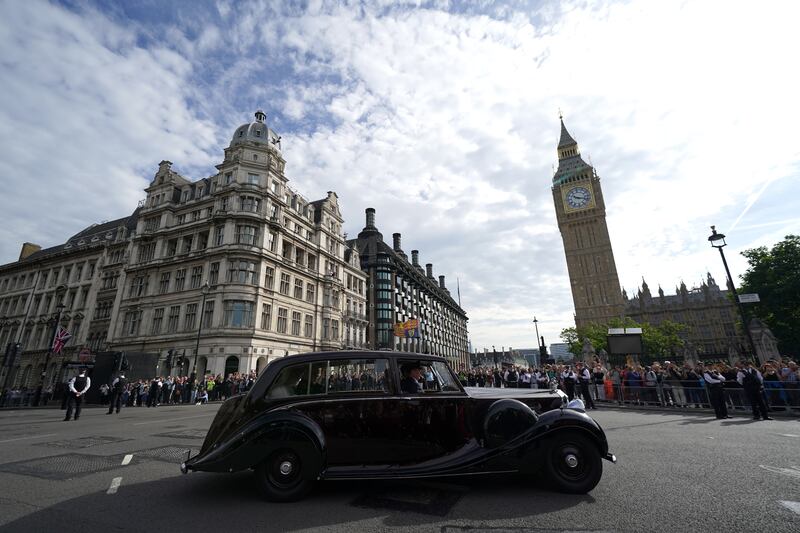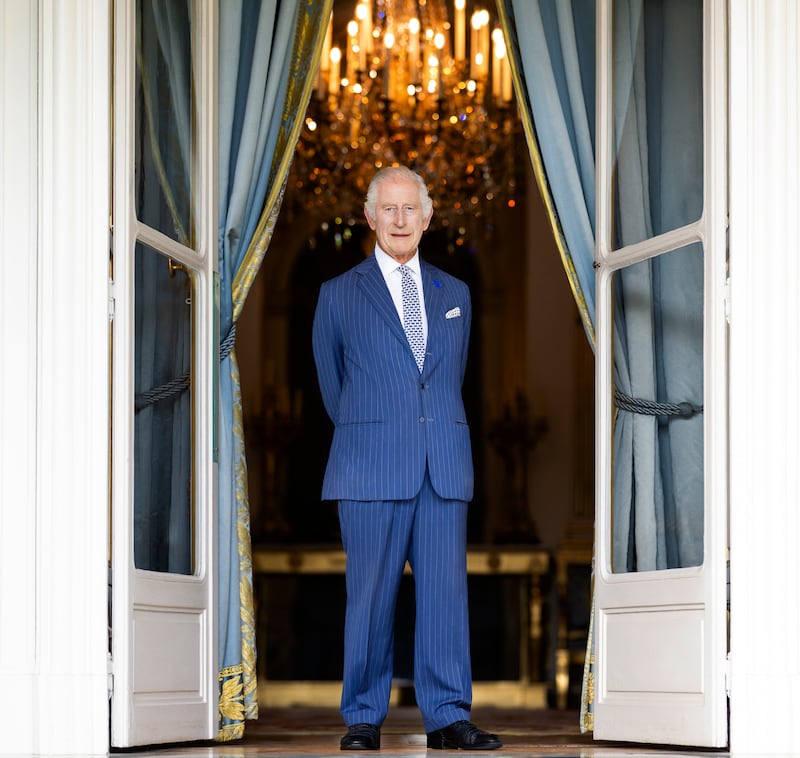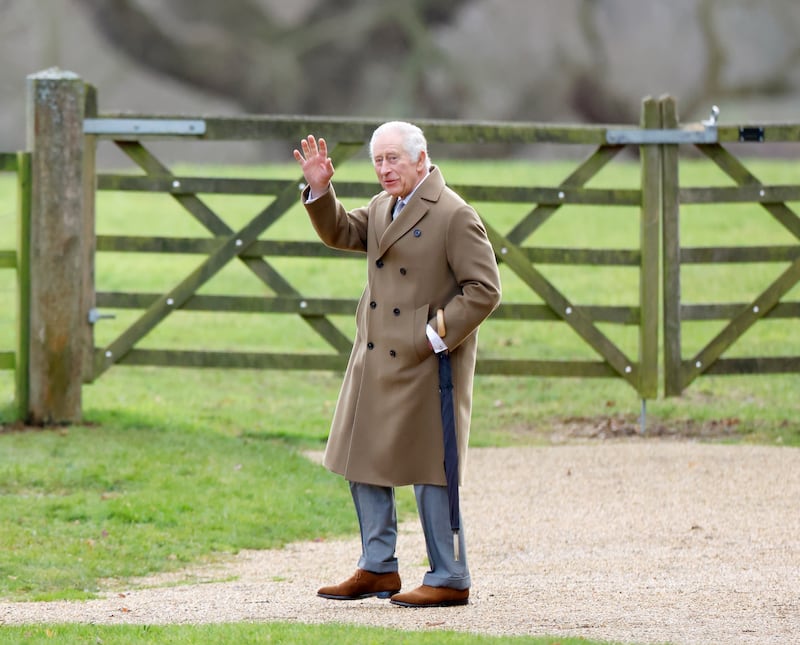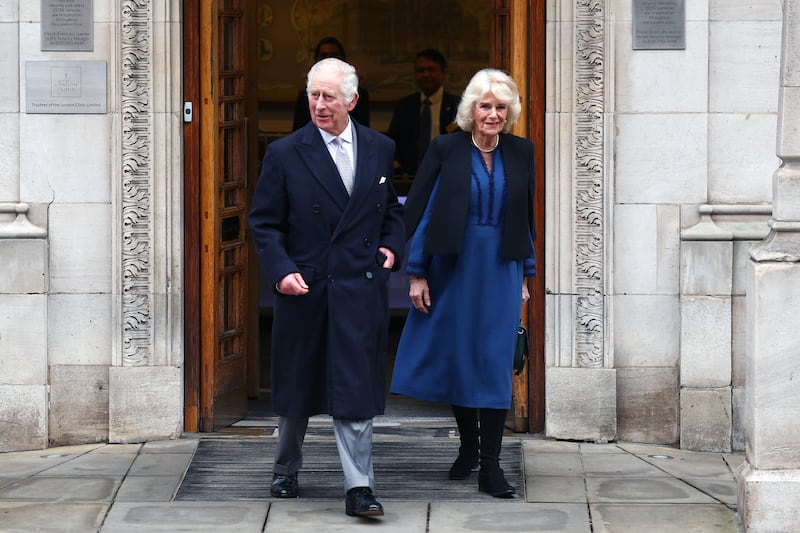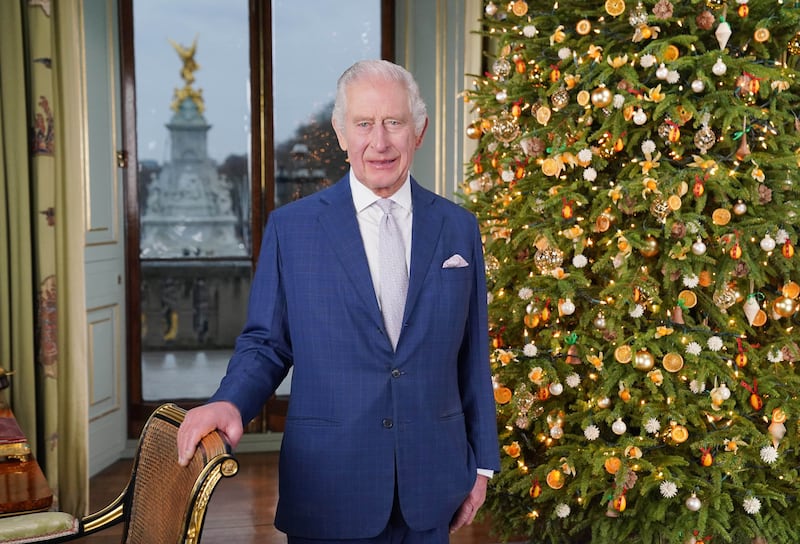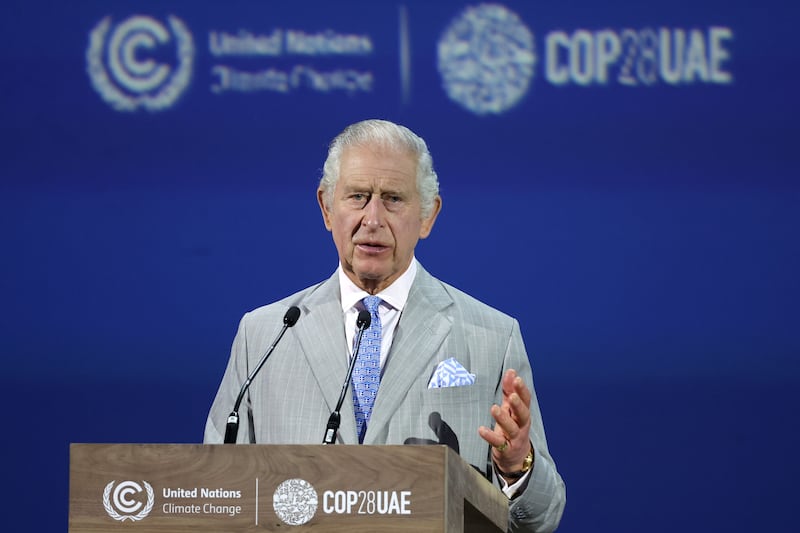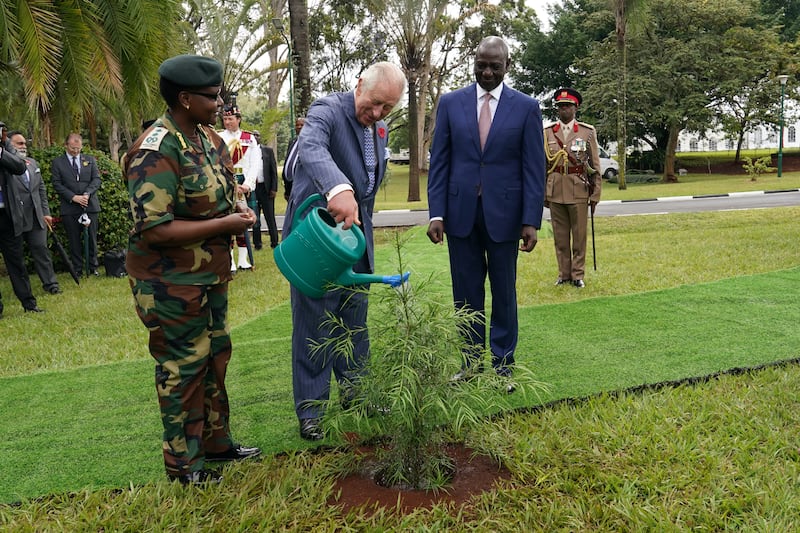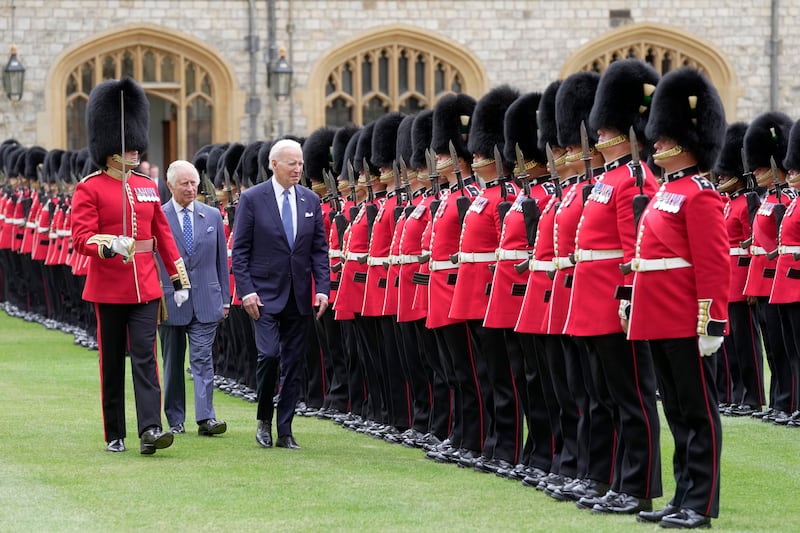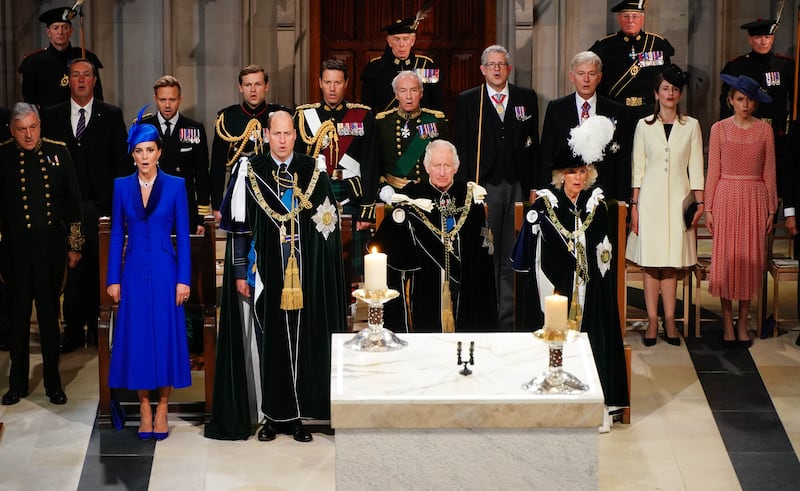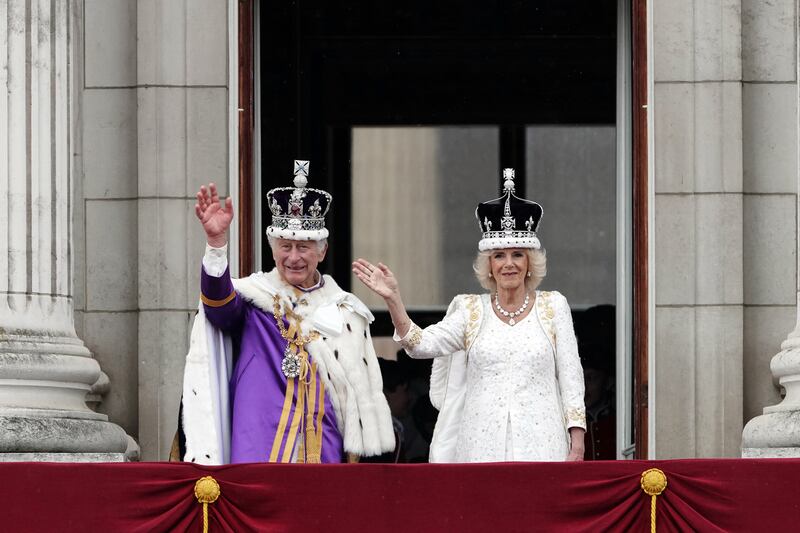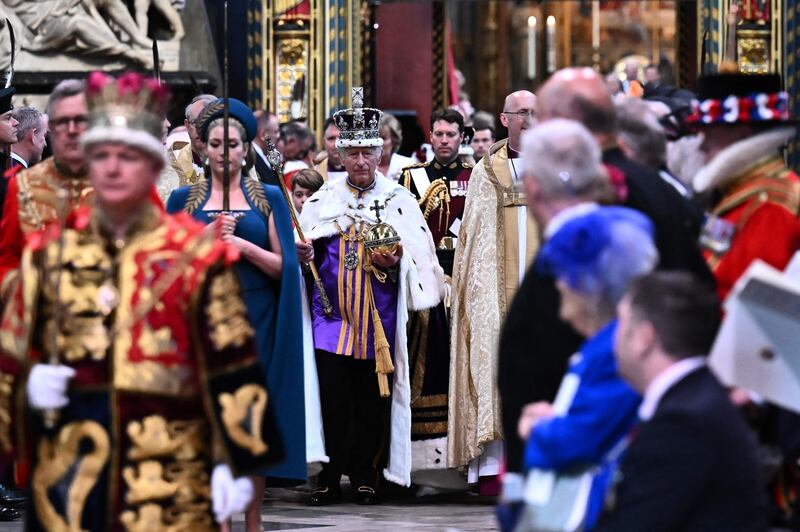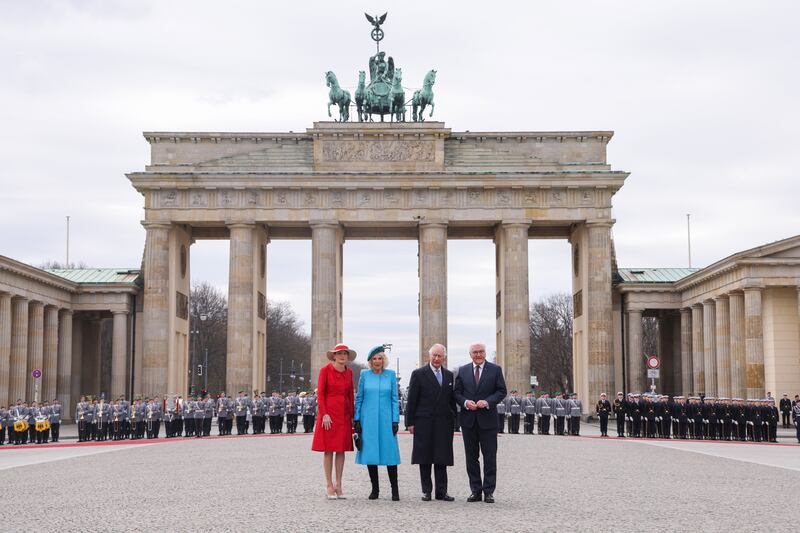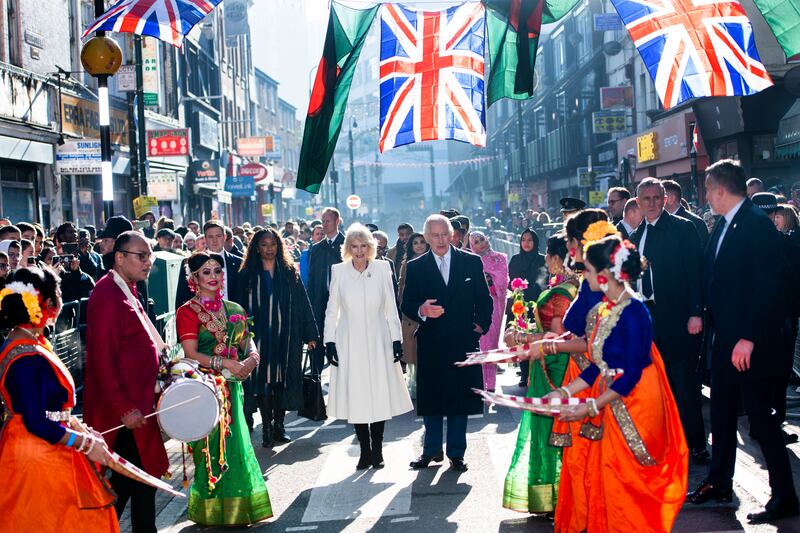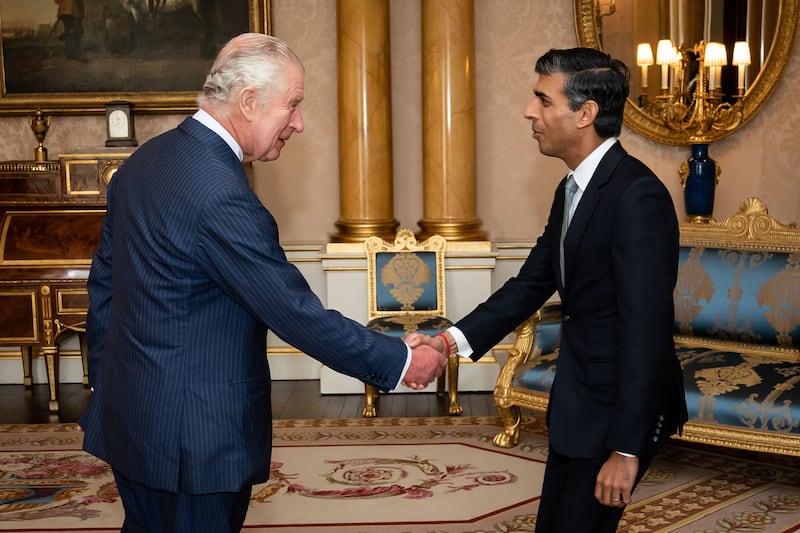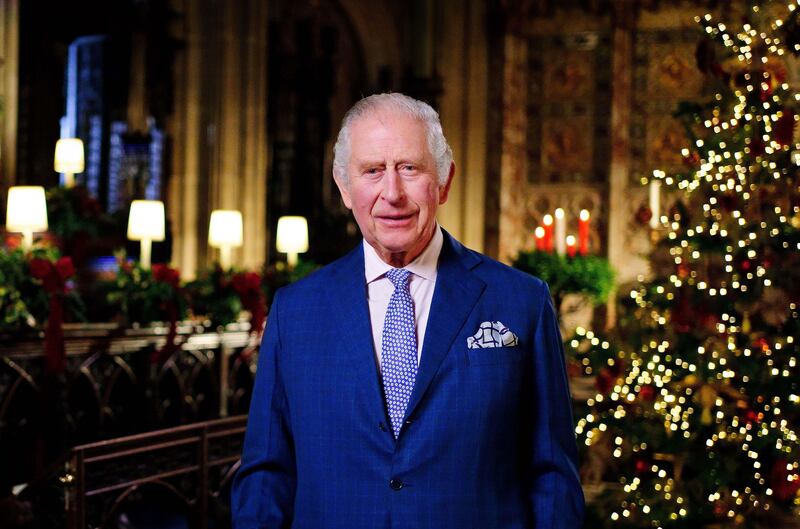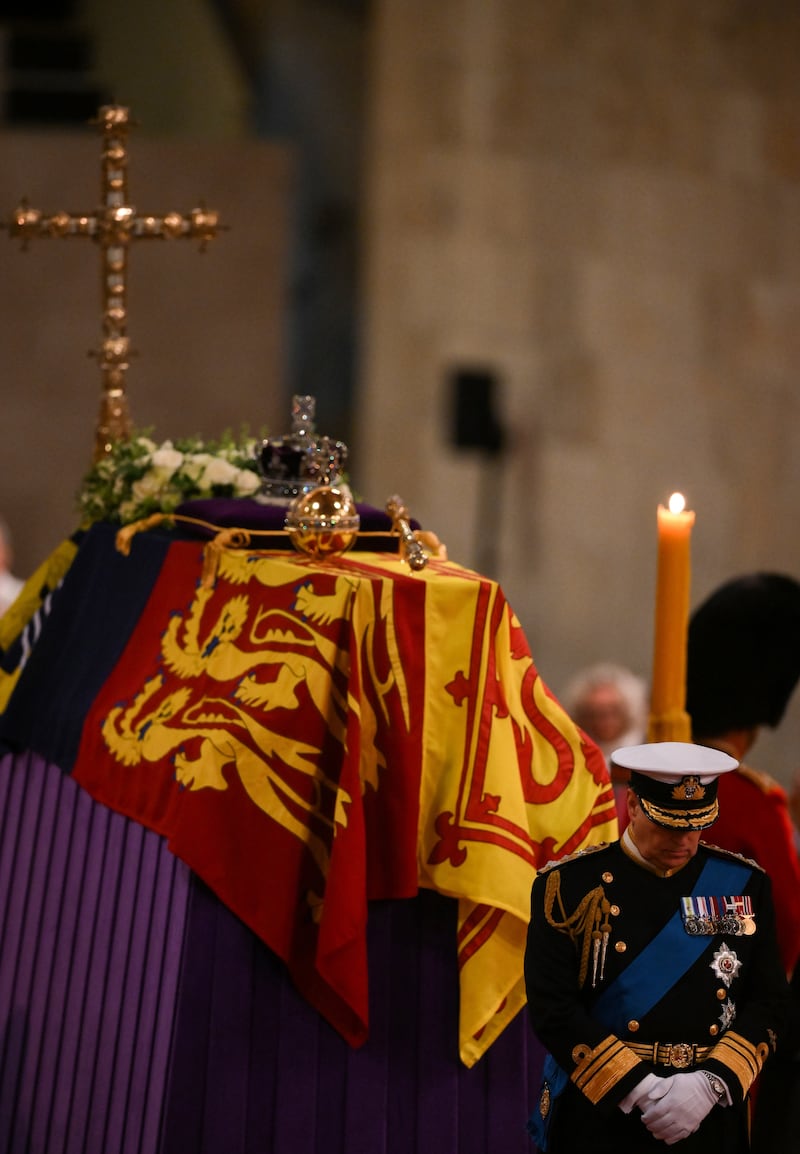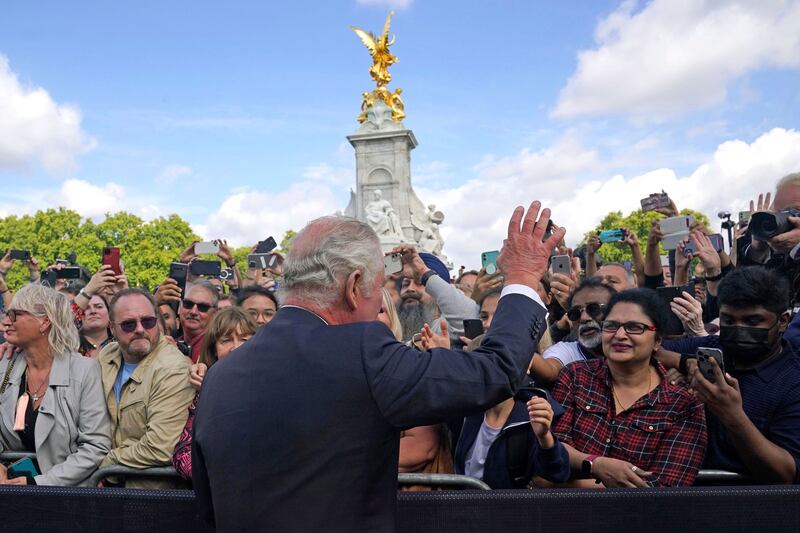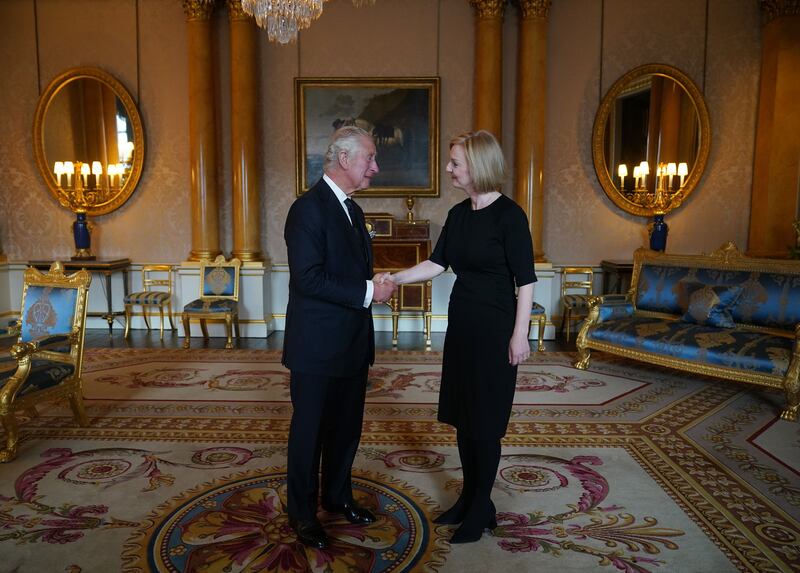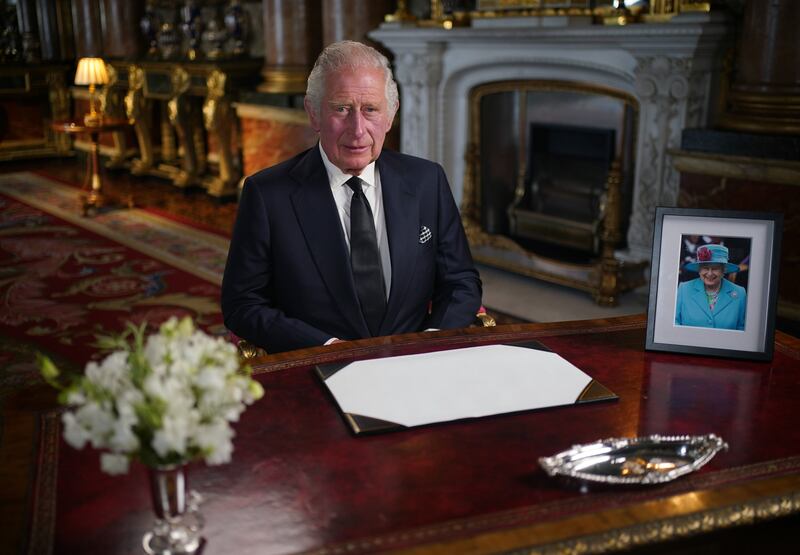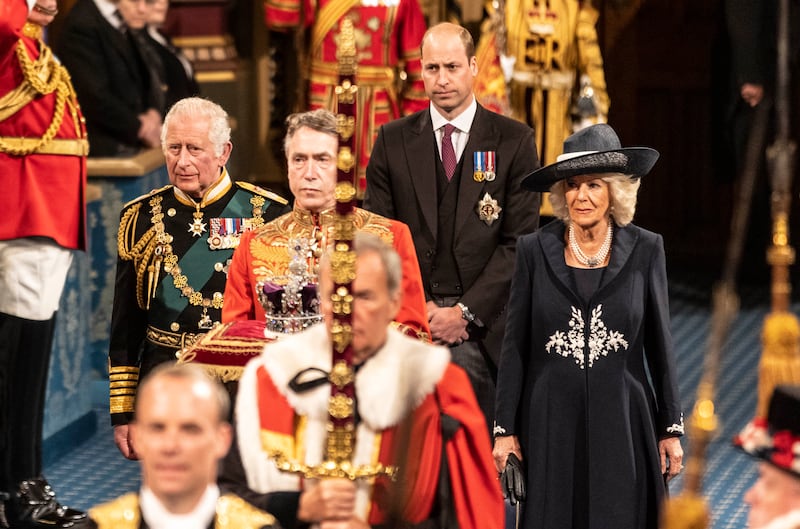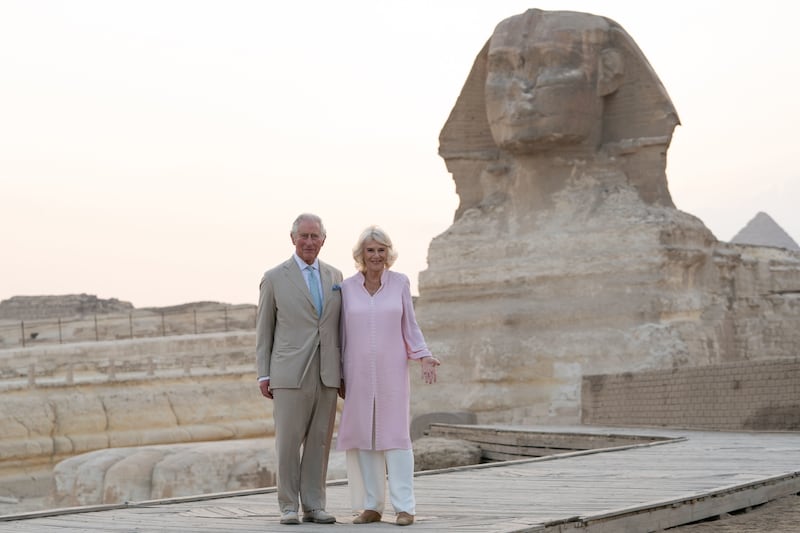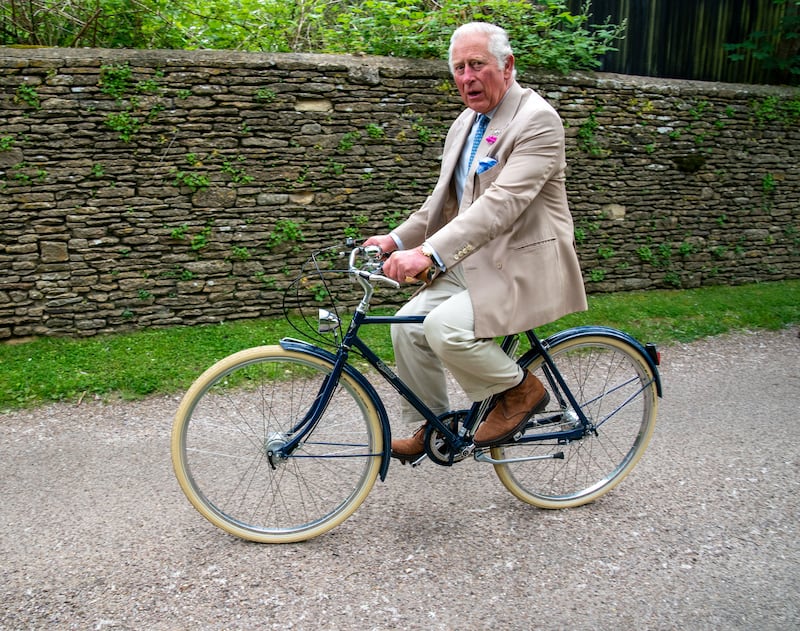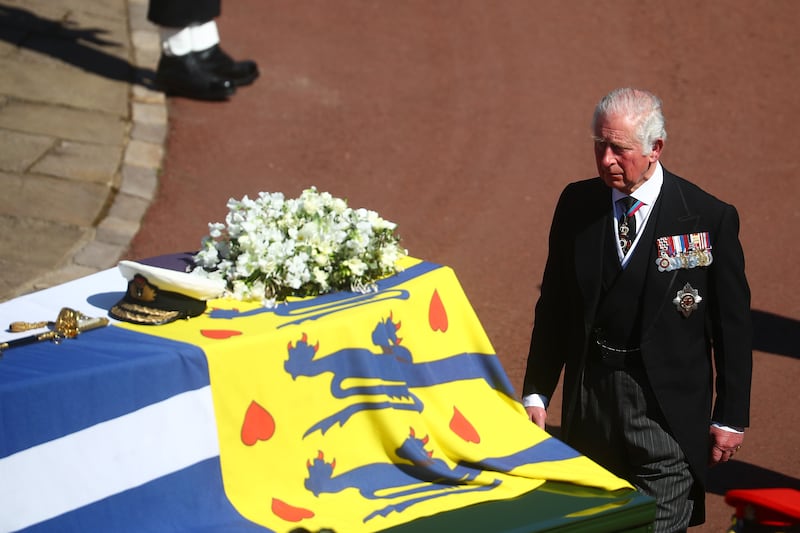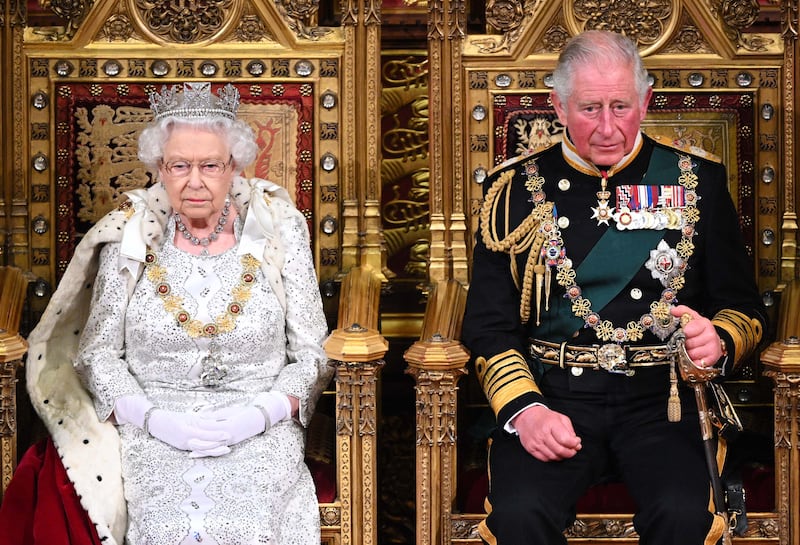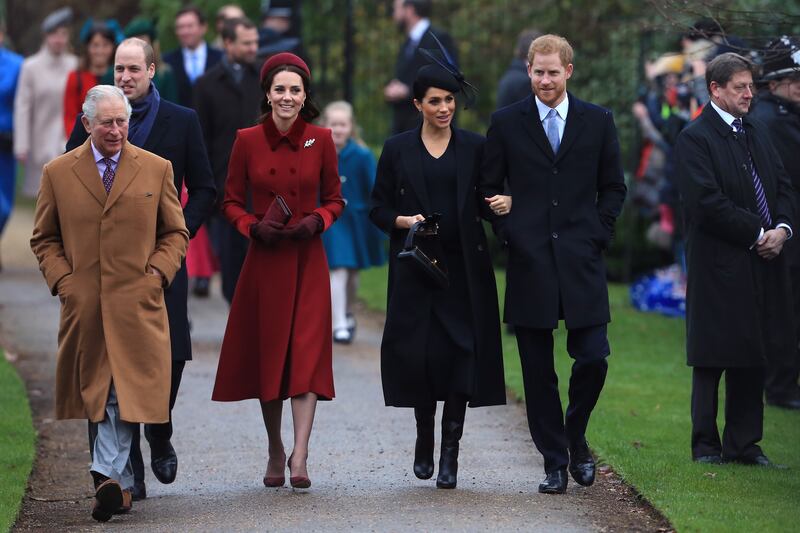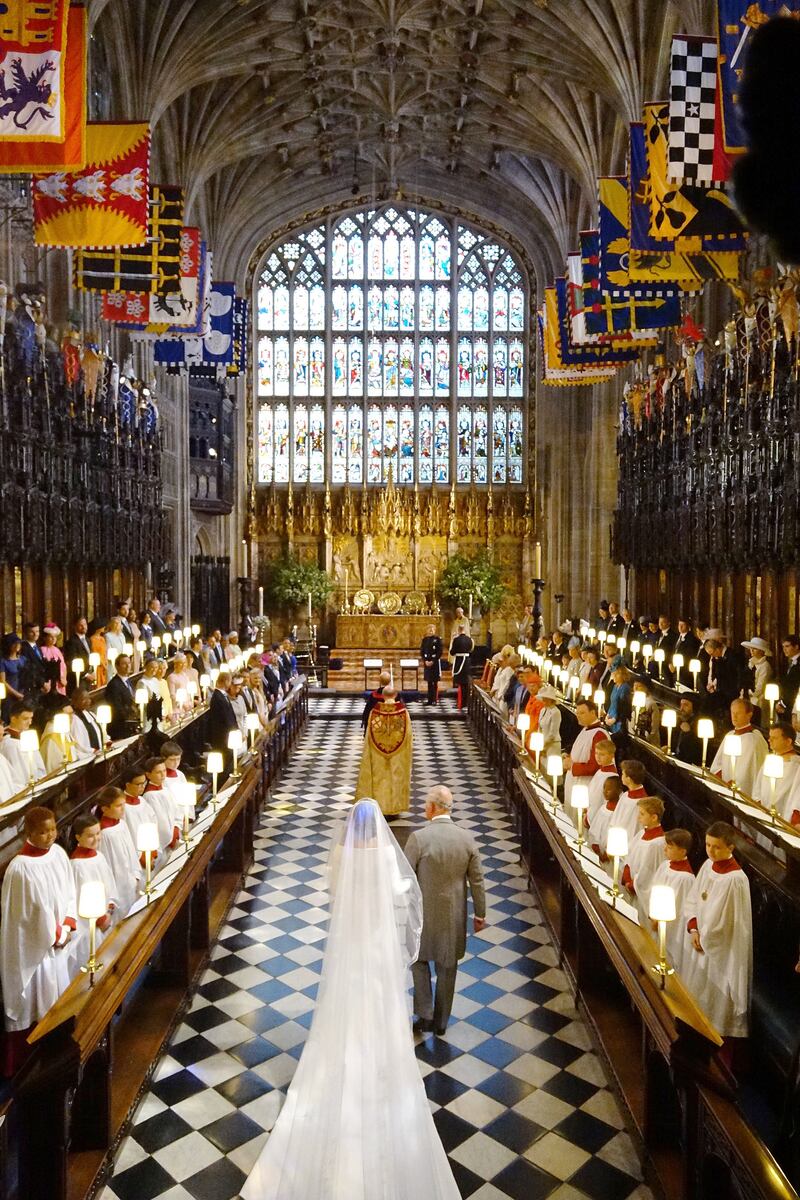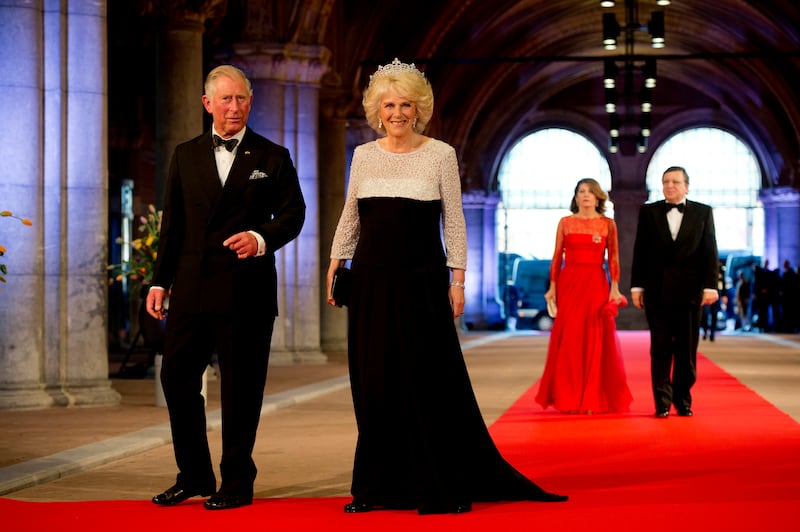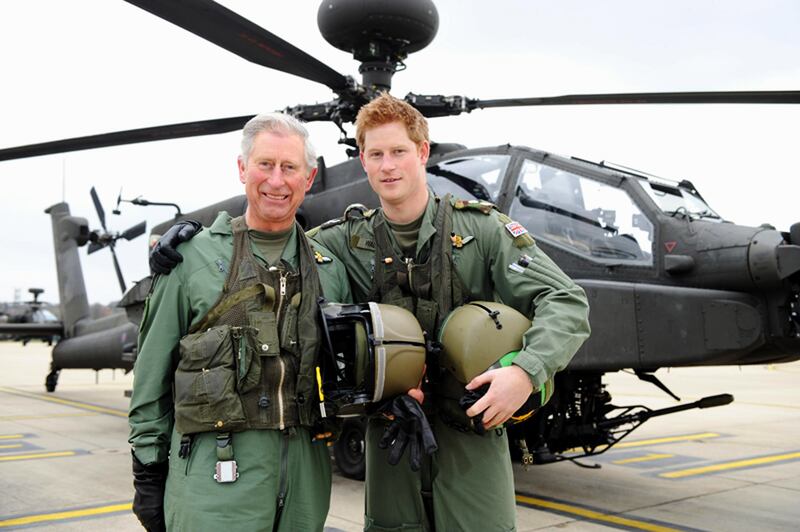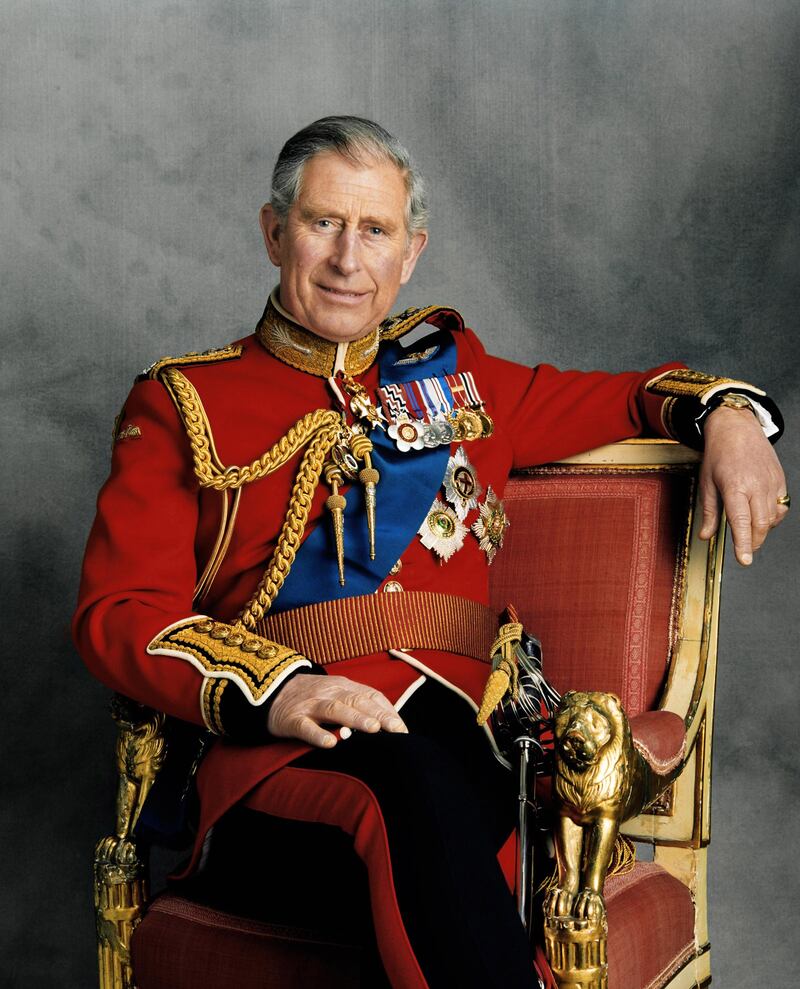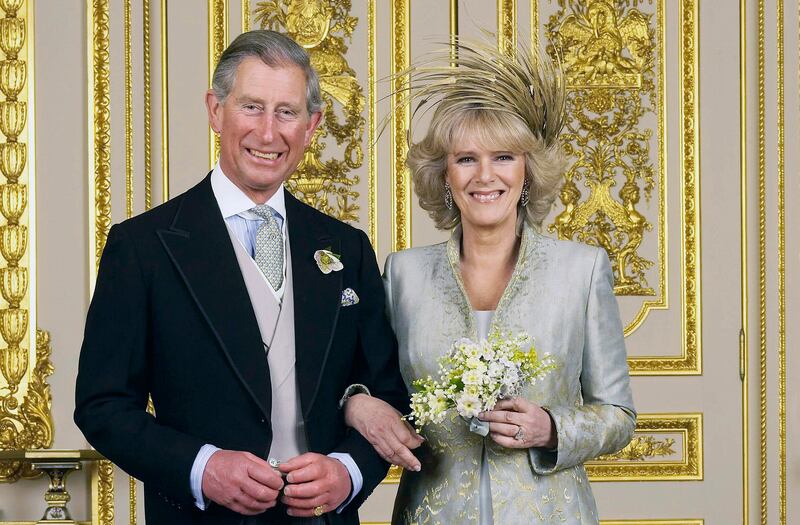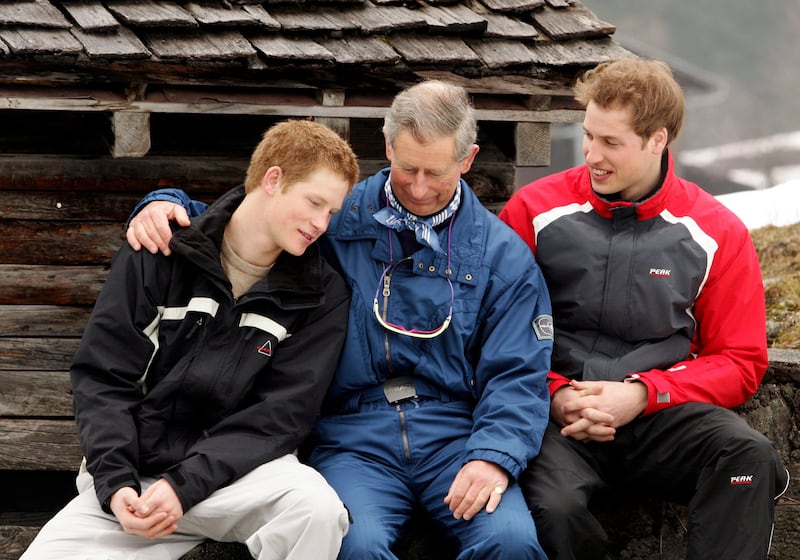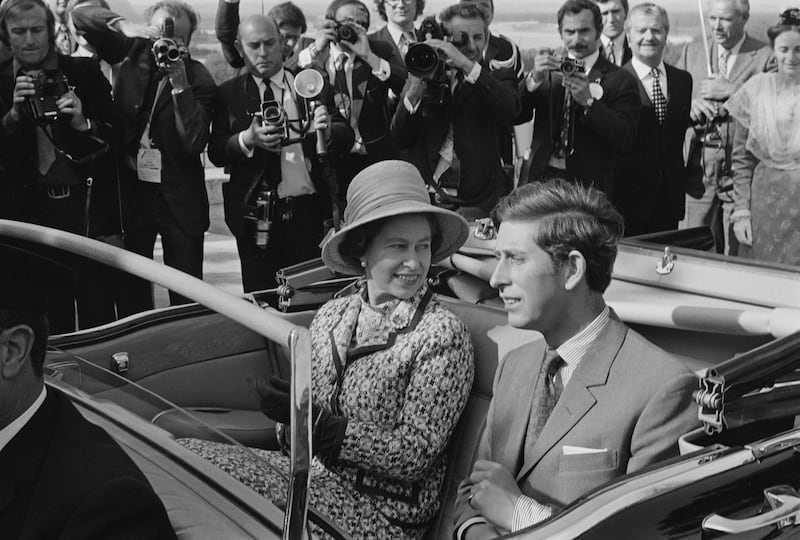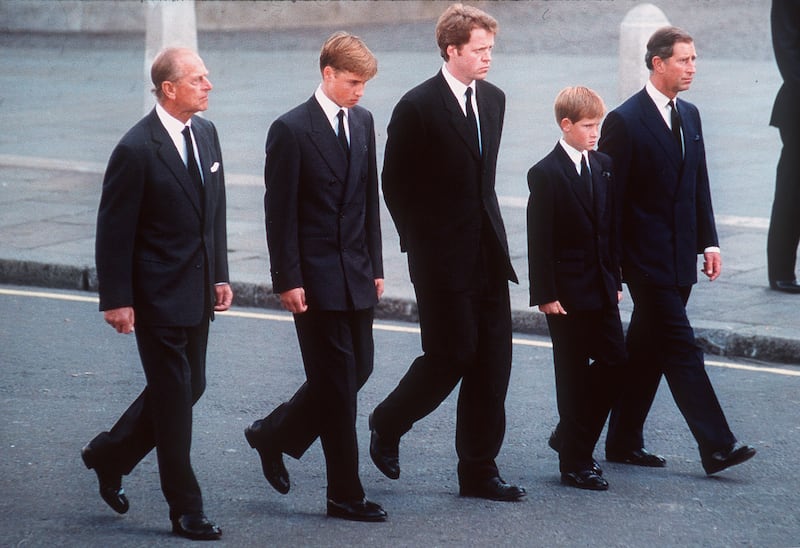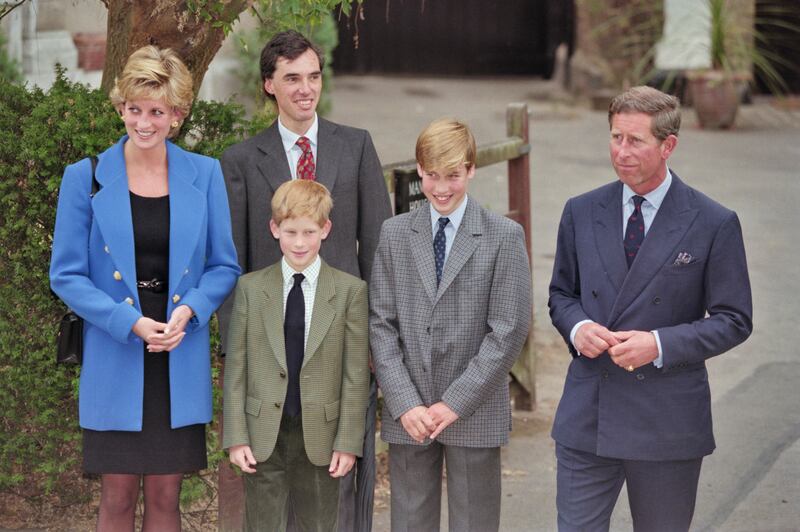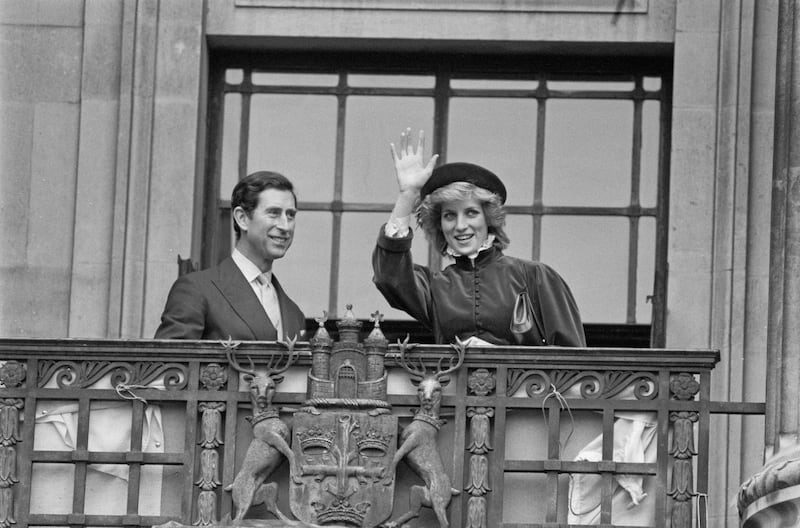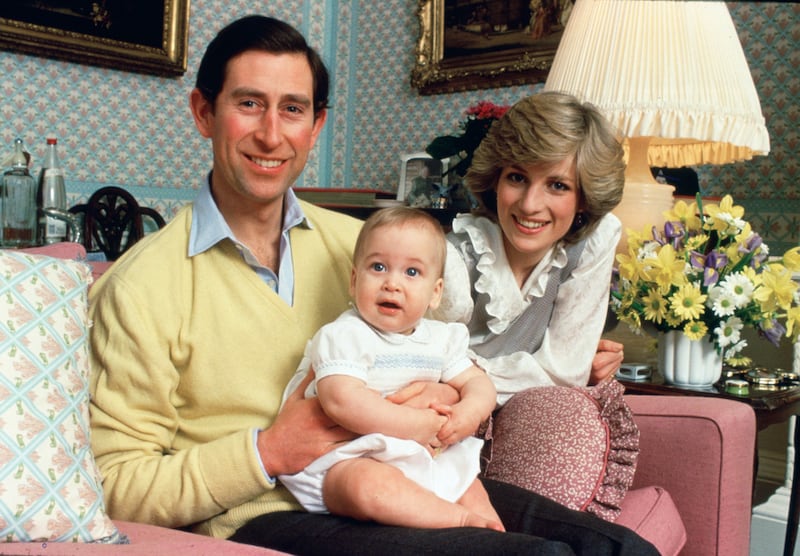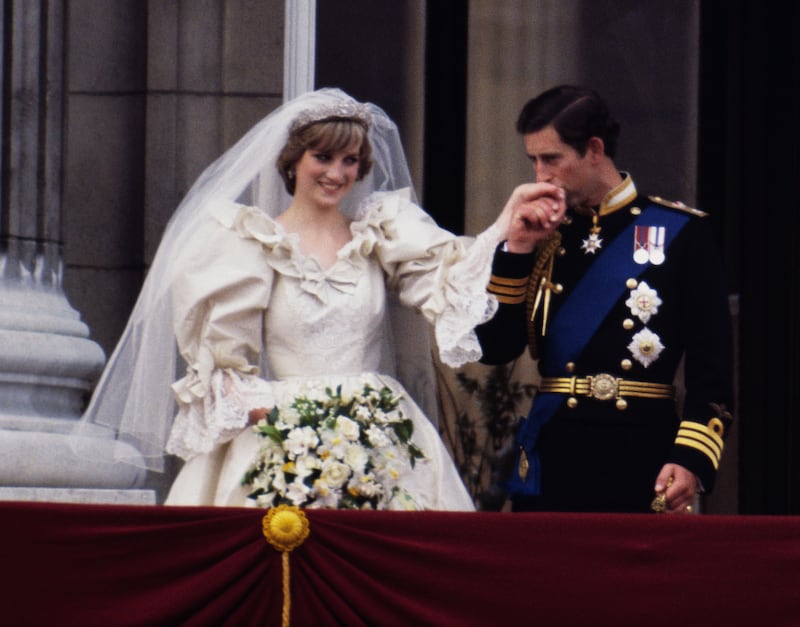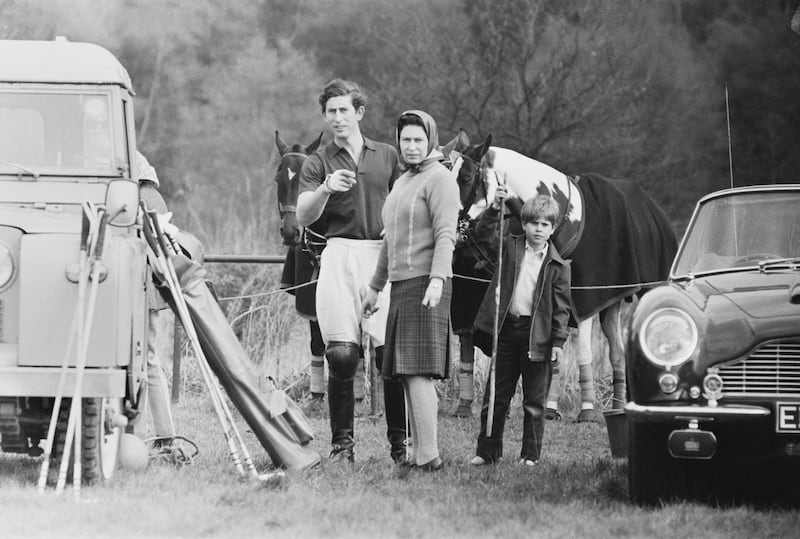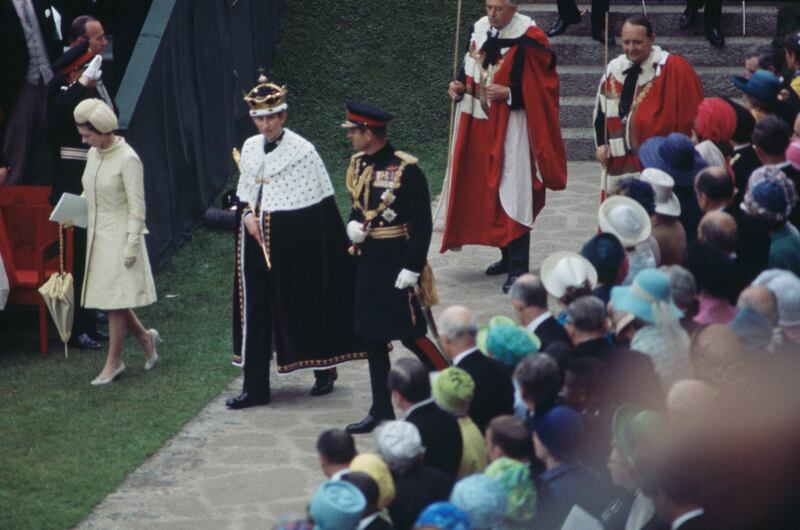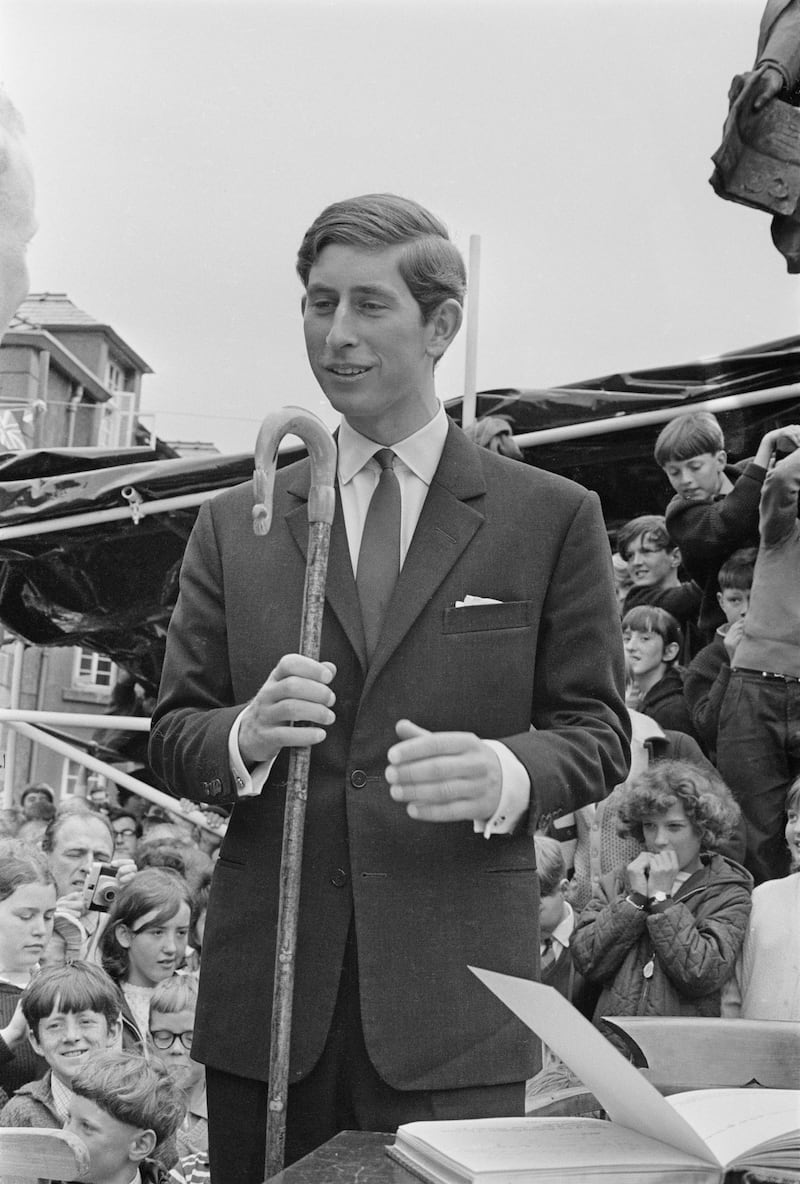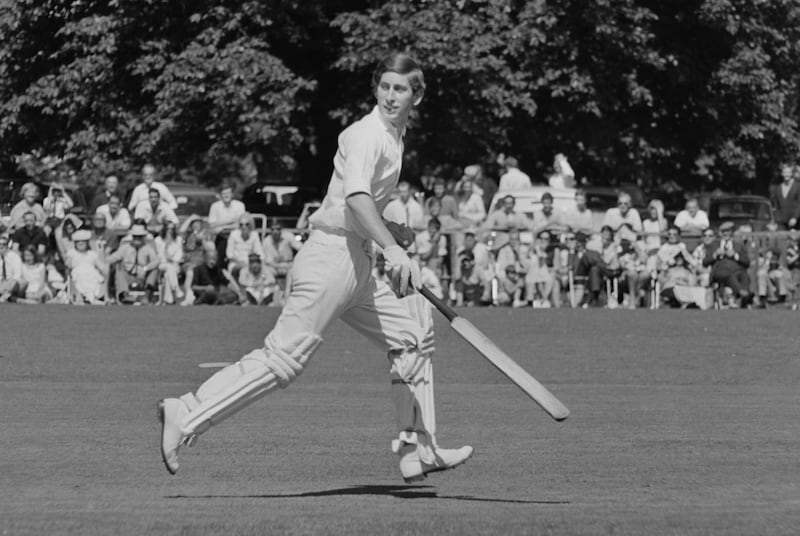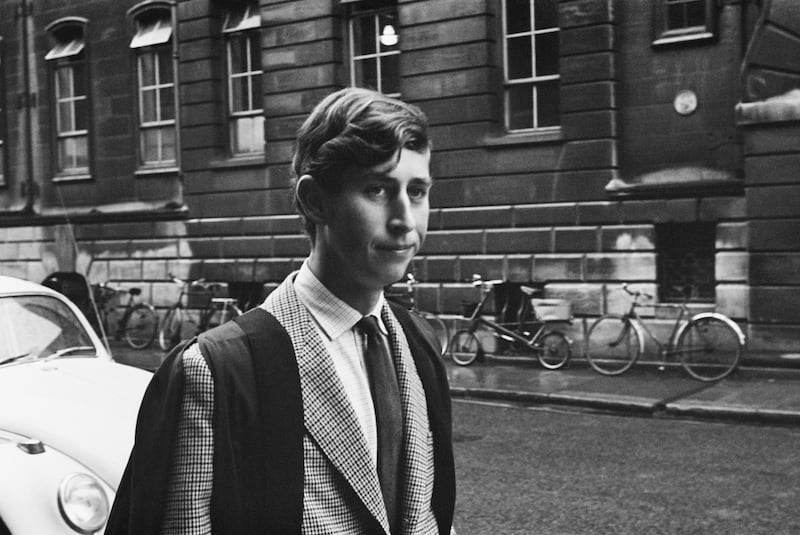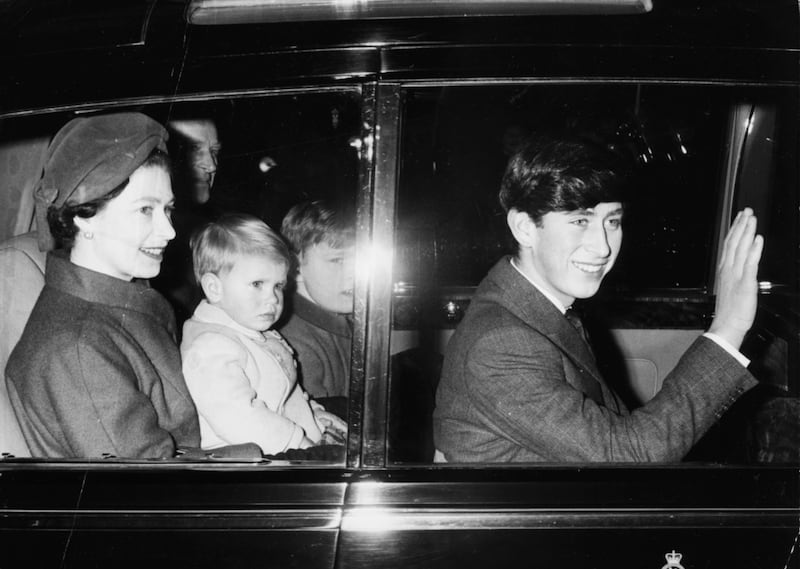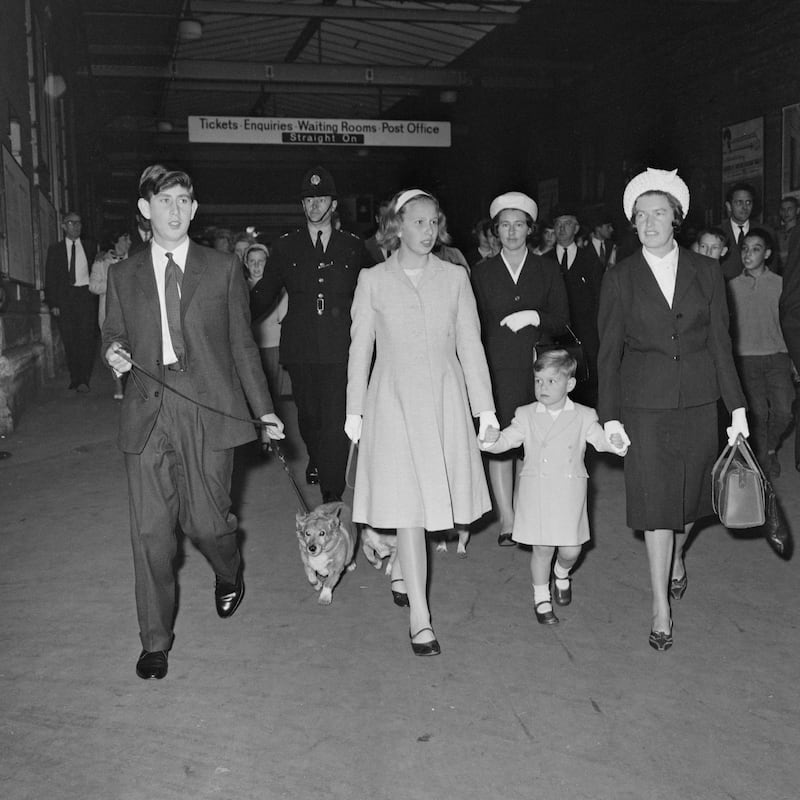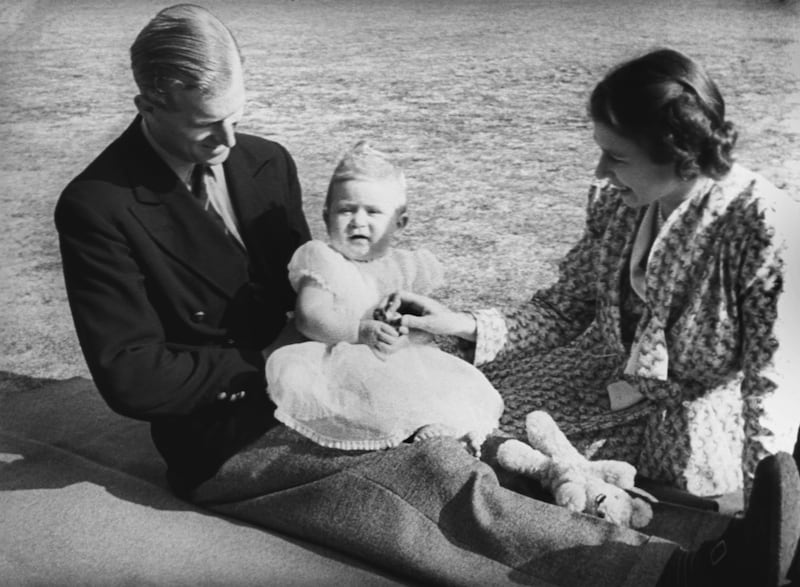Between four walls in which 1,000 years of regal and political history has unfolded, King Charles III on Monday addressed the British Parliament for the first time, stating his resolve to uphold his mother’s devotion to government.
Watched by members of the Houses of Lords and Commons, the king entered the north door of the ancient Westminster Hall, smiling at faces he recognised as he walked down the aisle, within touching distance of The National’s seat.
Dressed in a black tie and coat tails and accompanied by Queen Consort Camilla, the monarch appeared relaxed and content as he moved calmly towards the raised, red throne, marking a crucial constitutional moment in the transition of power after Queen Elizabeth II’s death.
For the first time, it was decided that the condolences offered, known as the Presentation of Address, should be made in the same ceremony in which the new king responded in person, making Monday’s event one of special significance.
King Charles III led a procession behind the queen’s coffin along Edinburgh’s Royal Mile on Monday as the cortege made its way to St Giles' Cathedral for a service of remembrance.
The new monarch met with mourners outside Holyroodhouse after arriving from London, shaking handing, accepting condolences and reading floral tributes left for the queen, as officials waited to offer him the keys to Edinburgh.
The tune of God Save the King rang out around the city, before a 21 gun salute was fired and the king was invited to inspect the guard of honour.
The coffin rested at St Giles' Cathedral for a period of 24 hours to enable people of Scotland to pay their last respects. Continuous vigils mounted on the coffin by the Royal Company of Archers while the King and royals mounted an evening vigil on Monday.
At the outset of the day, the hum of politicians’ murmurs fell silent as 16 members of King’s Bodyguard slow-marched to the Westminster Hall steps, followed by the nine silver helmets with white swan-feather plumes of the Honourable Corps of Gentlemen at Arms.
The sense of occasion was immense as the grey head of the new monarch emerged at the north door of Westminster Hall, King Charles passed the rows of his new subjects across the same paving stones that William II had at the end of the 11th century and where Charles I faced trial and was sentenced to death in 1649.
That constitutional crisis between crown and parliament has long since been resolved but constant reminders in both ceremony and law were further cemented during the 40-minute service.
“Those revolutions led to our constitutional freedoms that set up the foundation for a stable monarchy which protects liberty,” said Sir Lindsay Hoyle, Speaker of the Commons.
He referred to the monarchy being a “measure of stability in an everchanging world”. Then, in condolence for the king’s loss, he said: “Deep is our grievance, we know yours is deeper.”
As King Charles listened, one hand shifted from the throne’s arm on to his lap and back again as he settled into becoming accustomed to being enthroned, sat before the most senior ranks of his subjects.
The queen consort, dressed in black, remained resolutely upright as those in Westminster Hall, along with an international audience of millions, listened to the king’s speech.
“As I stand before you today, I cannot help but feel the weight of history that surrounds us and which reminds us of the vital parliamentary traditions to which members of both houses dedicate yourselves, with such personal commitment, for the betterment of us all,” he said.
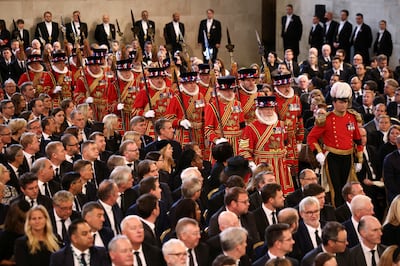
The words of condolence “so touchingly encompass” what his “beloved mother meant to us all”.
The great, decorative, hammerbeam roof of Westminster Hall was once called “the greatest creation of medieval timber architecture” and its scale matched the regal nature of the occasion.
Queen Elizabeth was only 25 when she came to the throne, pledging to maintain a constitutional government. “This vow she kept with unsurpassed devotion,” said the king, 73. “Which, with God's help and your counsels, I am resolved faithfully to follow.”
In tribute to his mother, he said: “As Shakespeare said of the earlier Queen Elizabeth — 'she was a pattern to all princes living'.”
The addresses by both the Lords and Commons are an essential part to Britain’s transition of power from queen to king. Each expresses condolence for the dead sovereign before pledging loyalty to the new monarch.
After each address was read it was formally presented to King Charles, who briefly held the documents before handing them to his kilted equerry, Maj Johnny Thompson.
The Lord Speaker, Baron Mcfall of Alcluith, led the first address and instantly captured the mood of those assembled and beyond the thick medieval walls.
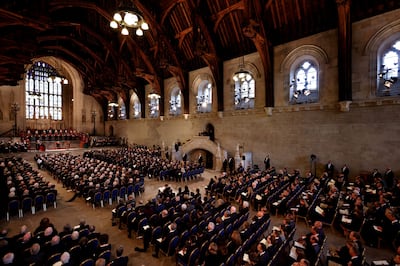
The queen had appeared indestructible and “we and the nation have closed our eyes to this inevitability” of her passing, he said, and her people now felt “a sense of loss beyond measure”.
That loss will become increasingly evident in the coming days.
As the crowds of Lords, Cabinet members, current and former prime ministers drifted out of the hall, with a sense of reverence in an act of history witnessed, yellow-jacketed workers entered. Within a day, they will have erected the catafalque on which the queen’s coffin will be placed.
Then queues measuring more than eight kilometres will form as up to 500,000 of Queen Elizabeth II’s subjects enter the hall of monarchs to say their last goodbyes.
